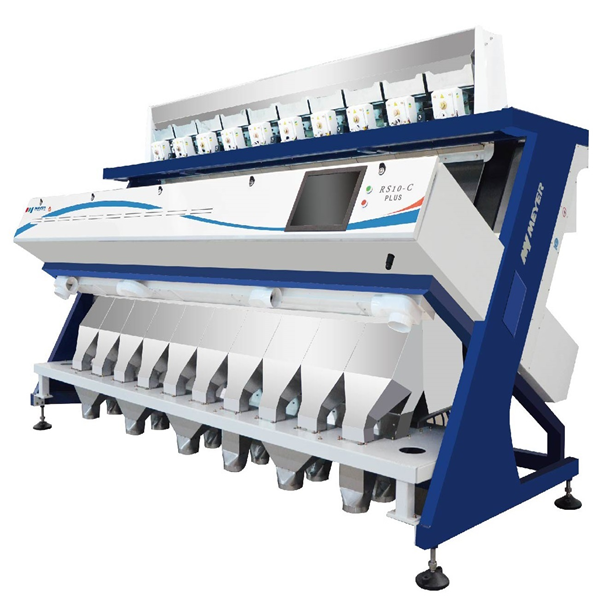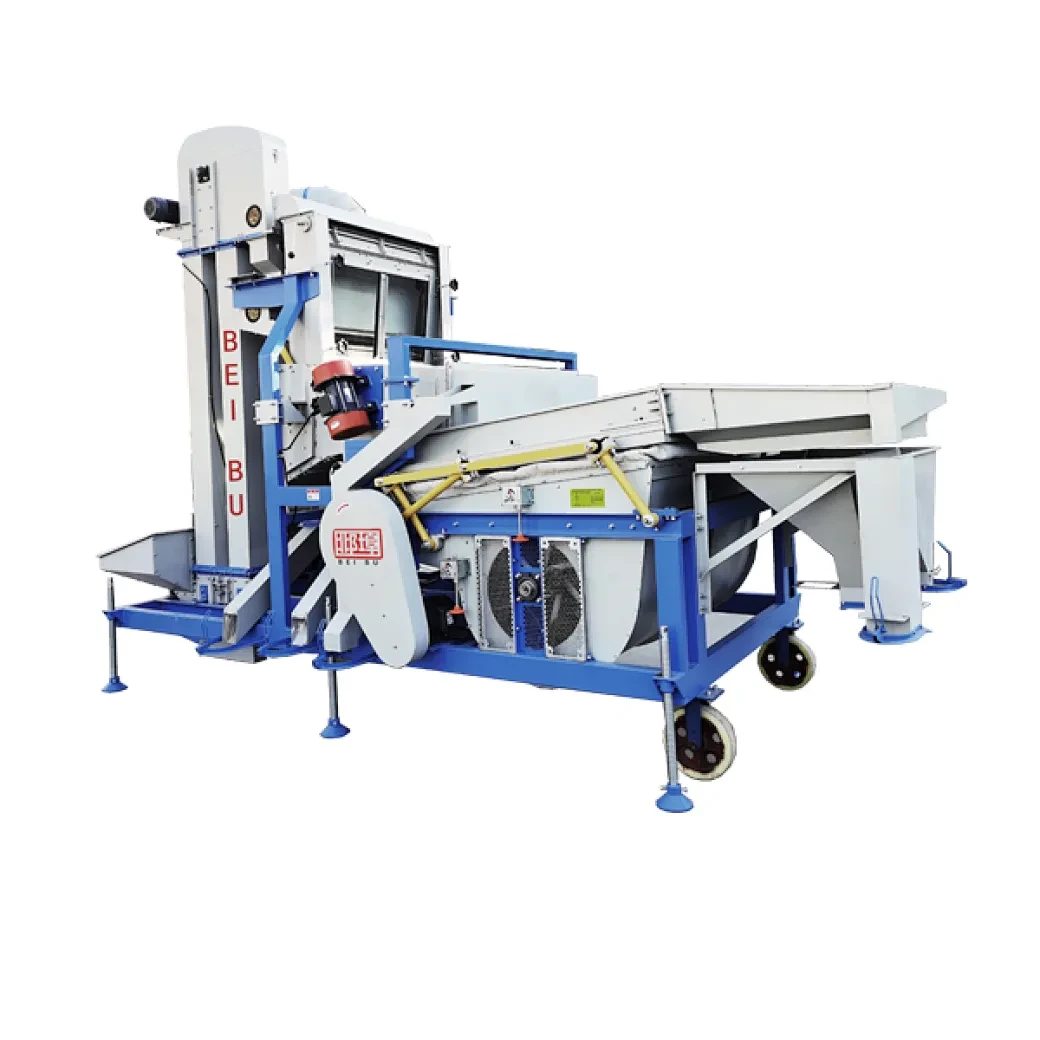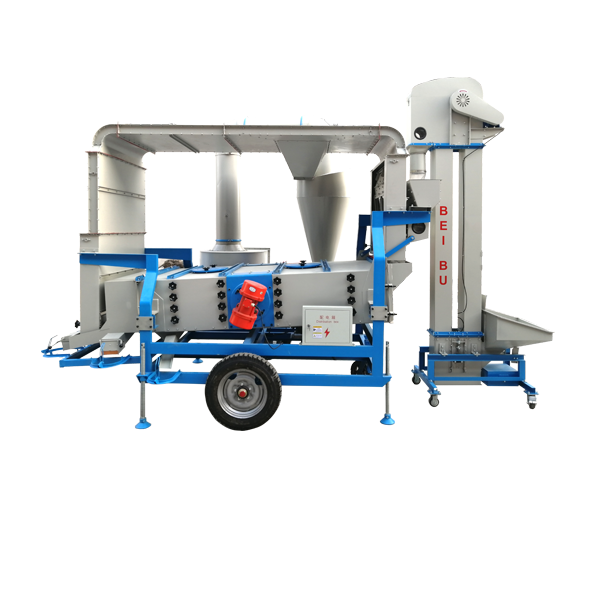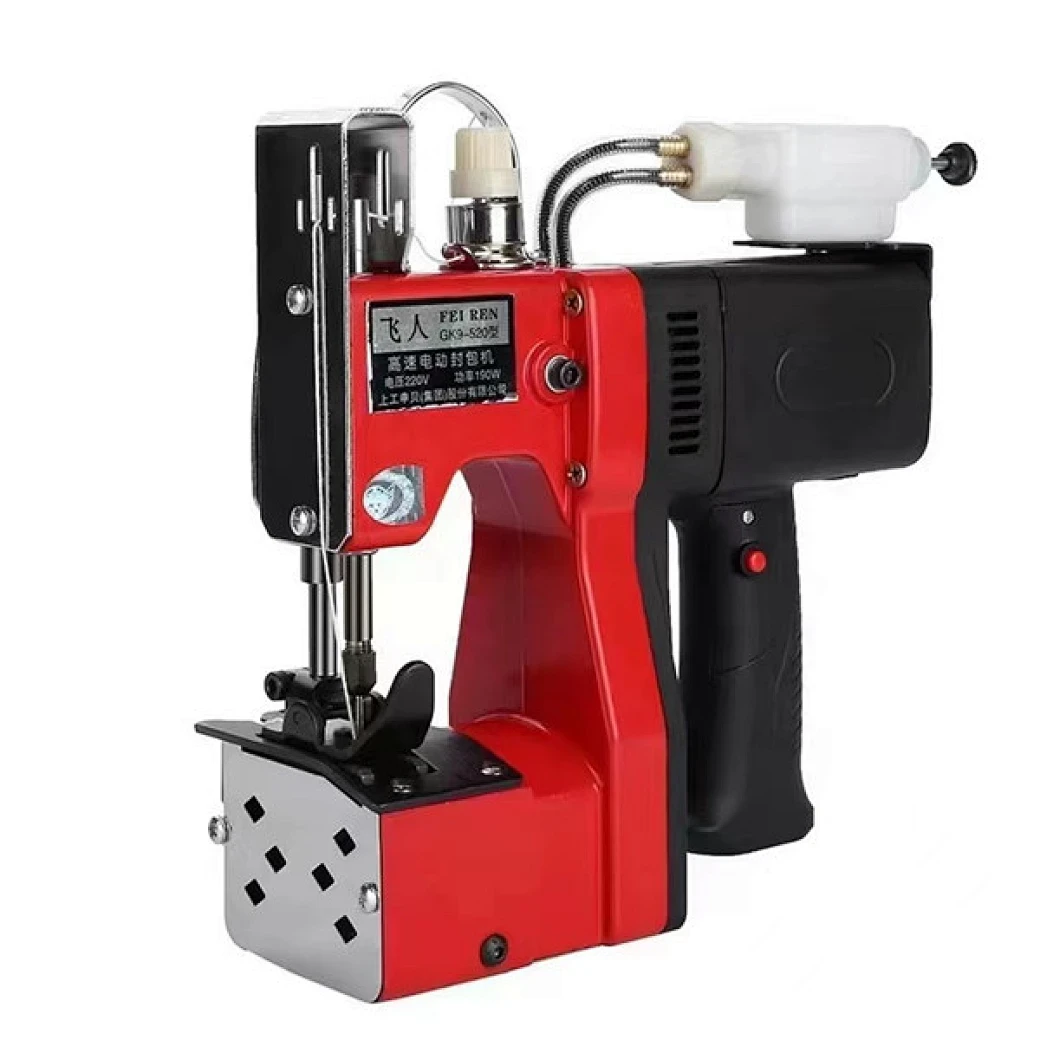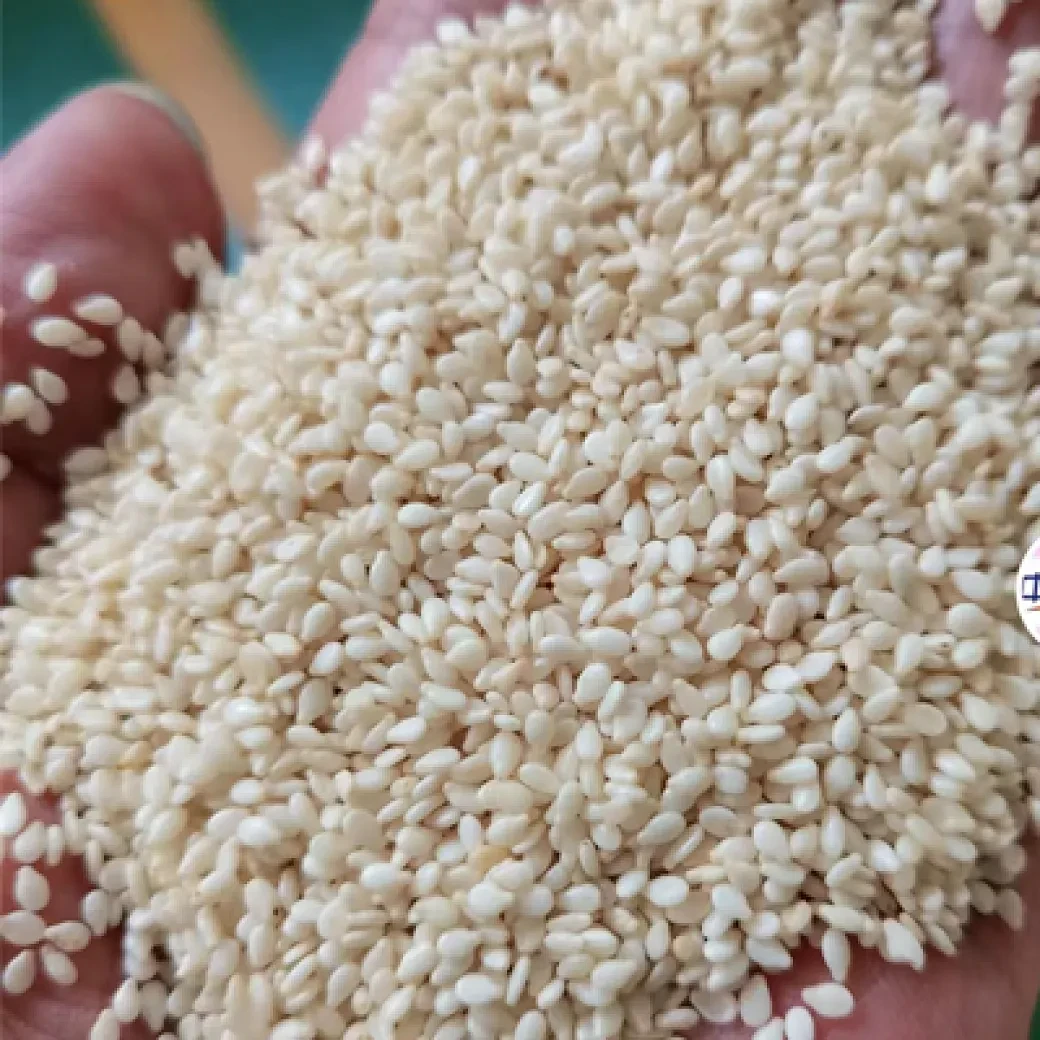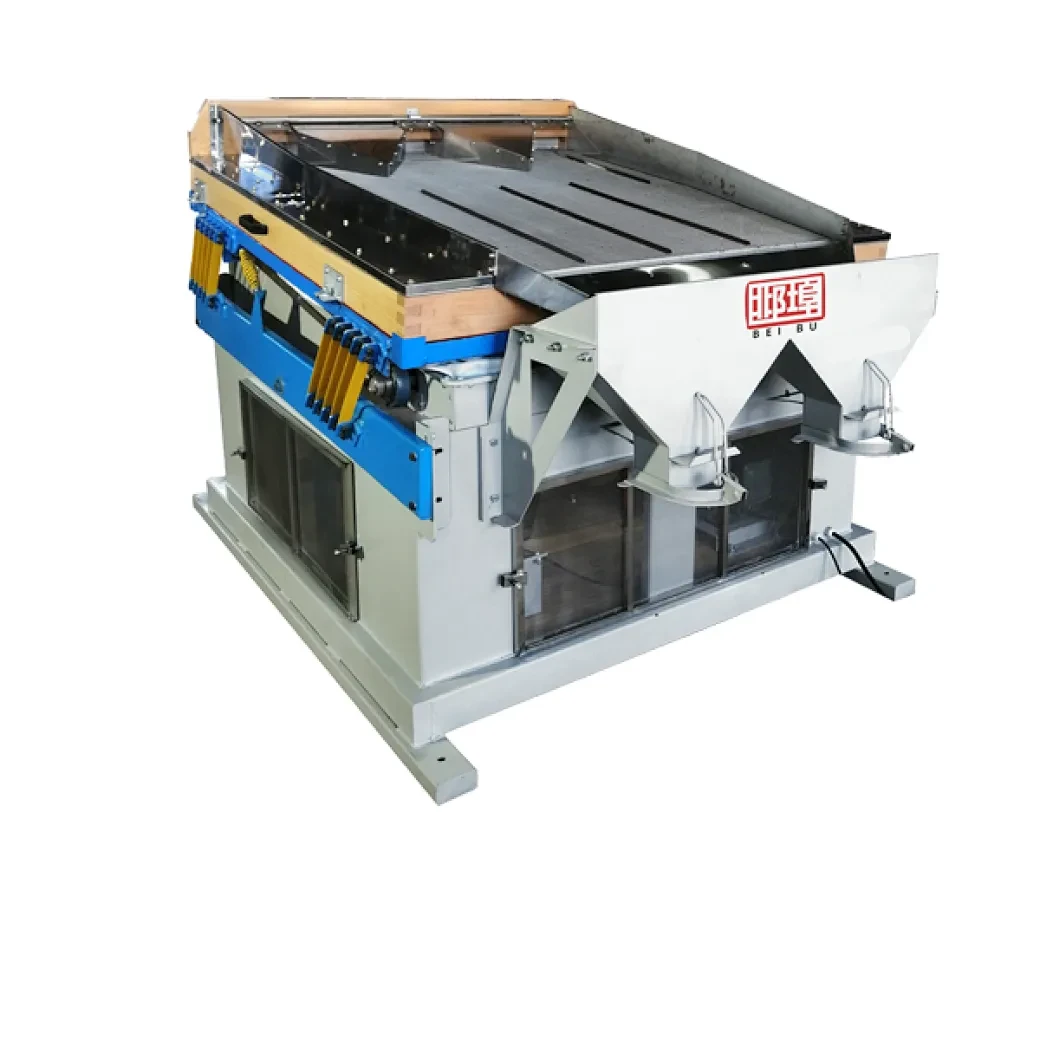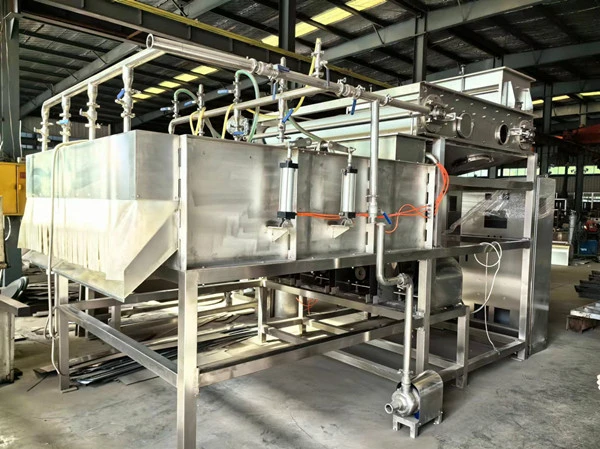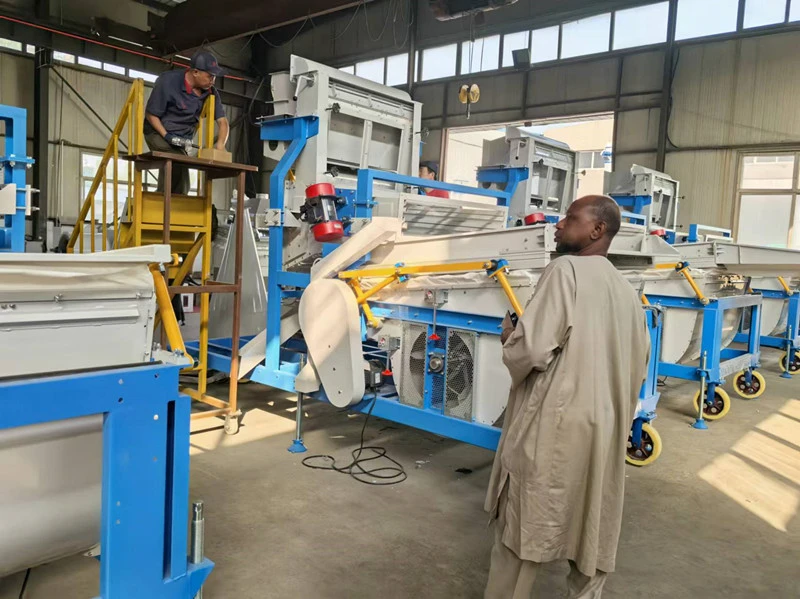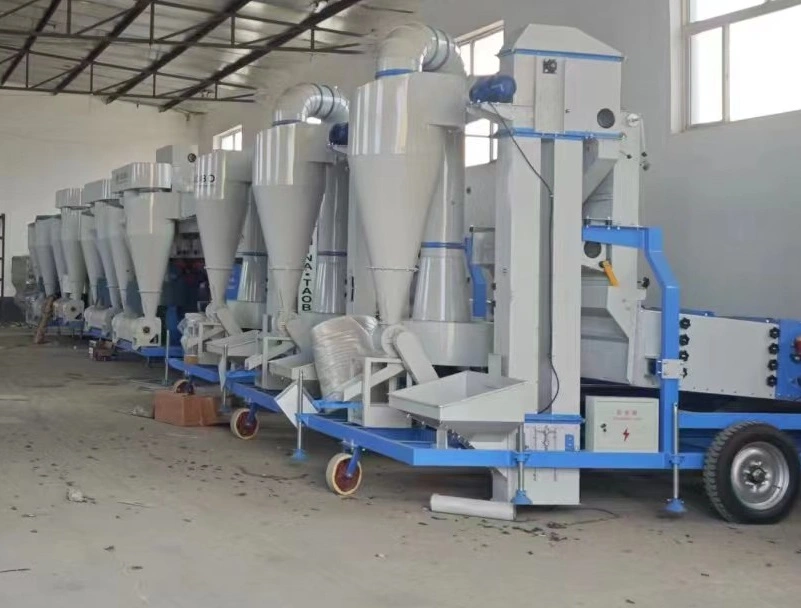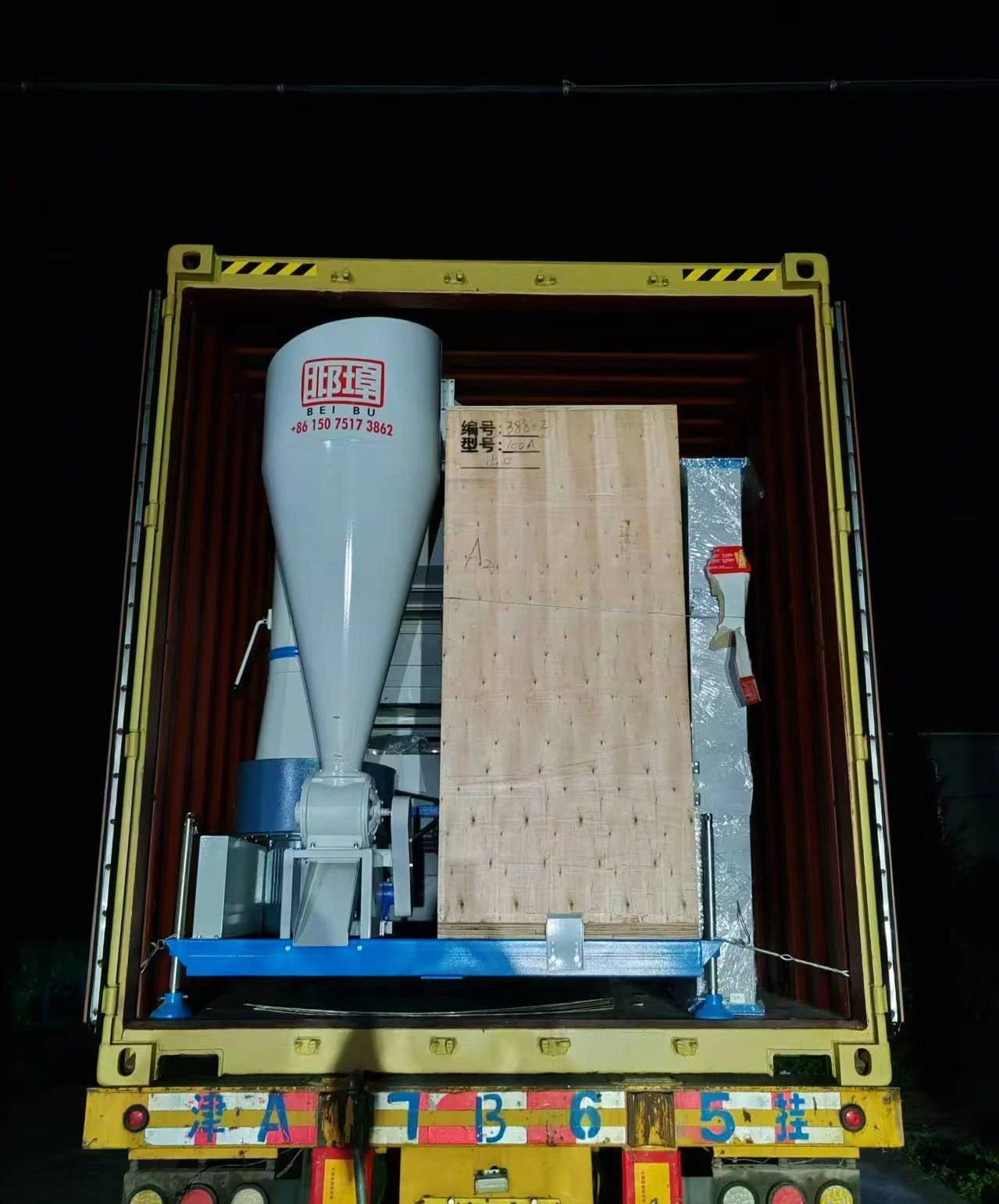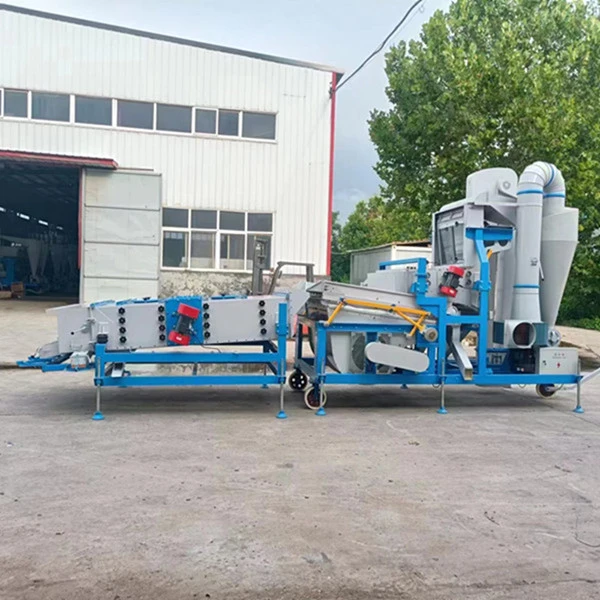
Unlocking Efficiency: The Global Demand for Superior Sesame Peeling Machine Technology
The global demand for sesame seeds, particularly hulled sesame, has witnessed a significant surge in recent years. This is primarily driven by their extensive use in various food industries, from bakeries and confectioneries to the production of tahini, sesame oil, and snack foods. Raw sesame seeds come with a hull (or skin) that, while nutritious, can impart a slightly bitter taste and affect the aesthetic appeal and texture of finished products. Consequently, the efficiency and reliability of sesame peeling machine technology have become critical factors for processors aiming to meet stringent quality standards and achieve optimal yield.
The industry trend is clearly shifting towards automated, high-capacity sesame hulling machine solutions that minimize manual labor, reduce water consumption, and ensure maximum peeling rates with minimal breakage. Food safety regulations, such as HACCP and ISO 22000, are also pushing manufacturers to invest in machines made from food-grade materials and designed for easy cleaning and maintenance. The market for sesame seed peeling machine and sesame processing machine is expanding, with innovations focusing on integrating multiple processing steps (soaking, peeling, separating, drying) into a single, cohesive system. This integrated approach not only boosts productivity but also ensures a consistent end-product quality, which is paramount in a competitive market.
According to a report by Grand View Research, the global sesame seeds market size was valued at USD 7.02 billion in 2022 and is expected to expand at a compound annual growth rate (CAGR) of 1.7% from 2023 to 2030. This growth directly fuels the demand for advanced processing equipment. Specifically, the segment for hulled sesame is projected to grow faster due to its wider application in value-added products, underscoring the critical role of an effective sesame peeling machine.
The BeibuCleaner Sesame Peeling Machine: Precision Engineering for Optimal Results
Our flagship product, the BeibuCleaner Sesame Peeling Machine, is engineered to deliver exceptional performance in sesame seed processing. Available at https://www.beibucleaner.com/sesame-peeling-machine.html, this machine integrates cutting-edge technology to ensure a high peeling rate (typically over 98%) while preserving the integrity of the sesame kernel.
Technical Parameters and Specifications
Understanding the core technical specifications is crucial for evaluating a sesame hulling machine's suitability for specific production needs. Our machines are designed with a focus on durability, energy efficiency, and high throughput.
| Parameter | Typical Specification | Importance to Performance |
|---|---|---|
| Capacity | 500 kg/h to 3000 kg/h (customizable) | Determines production volume; crucial for matching plant output requirements. |
| Peeling Rate | ≥ 98% | Indicates efficiency in hull removal; higher rate means less waste and better quality. |
| Broken Rate | ≤ 2% | Lower rate preserves kernel integrity, crucial for appearance and yield of finished products. |
| Total Power | 7.5 kW - 30 kW (varies by model) | Impacts energy consumption and operational costs; optimized for efficiency. |
| Material Contact Parts | Food-grade Stainless Steel (SS304/SS316L) | Ensures hygiene, prevents contamination, and offers excellent corrosion resistance. Critical for food safety (FDA/HACCP). |
| Water Consumption | Approximately 0.5-1.0 m³/ton of raw sesame | Indicates water efficiency; lower consumption leads to reduced operational costs and environmental impact. |
| Control System | PLC (Programmable Logic Controller) with HMI (Human-Machine Interface) | Enables precise control, automation, fault diagnosis, and easy operation, enhancing reliability and reducing human error. |
| Dimensions (L×W×H) | Varies; e.g., 5000×2000×3500 mm (for a 1000kg/h model) | Important for plant layout and space allocation. |
| Service Life | >10 years with proper maintenance | Indicates long-term investment value and reduced total cost of ownership. |
Applicable Industries and Scenarios
The versatility of the sesame peeling machine makes it indispensable across various sectors. While primarily used in the food processing industry, its robust design and precise control mechanisms are analogous to high-standard equipment found in:
- Food Processing Plants: Bakeries, confectioneries, tahini manufacturers, sesame oil producers, snack food companies. These require high-purity, perfectly hulled sesame for premium products.
- Ingredient Suppliers: Companies that supply processed sesame seeds to other food manufacturers demand consistent quality and large volumes.
- Nutritional Supplement Industry: With the rise of sesame-based health foods and supplements, clean and efficiently hulled seeds are essential.
- Chemical/Pharmaceutical (Analogy): While not directly applicable, the principles of material handling, precise separation, and strict hygiene standards found in our sesame processing machine are akin to those in pharmaceutical granulation or chemical separation processes, where purity and yield are paramount.
In typical application scenarios, our sesame peeling machine shines by:
- Energy Efficiency: Optimized motor and transmission systems reduce power consumption per ton of processed sesame, leading to significant cost savings.
- Anti-Corrosion Design: Extensive use of SS304 and SS316L stainless steel ensures resistance to corrosion from water and acidic solutions used in the soaking process, guaranteeing a longer lifespan and preventing metallic contamination.
- Automated Operation: PLC control minimizes the need for continuous operator intervention, reducing labor costs and human error, while ensuring consistent process parameters.
- High Peeling Rate & Low Breakage: The advanced friction-based peeling mechanism gently removes hulls while keeping the kernel intact, maximizing valuable product yield.

The Advanced Process Flow of the Sesame Peeling Machine
The efficiency of a sesame peeling machine lies in its meticulously designed process flow. Our system embodies a holistic approach, ensuring optimal hull removal while maintaining seed quality. Below is a detailed breakdown of the manufacturing and processing steps within our advanced sesame processing machine:
Manufacturing Process of the Machine Itself:
- Material Selection & Sourcing: We meticulously select high-grade, food-contact compliant materials. For crucial components like the peeling chamber, stirring shafts, and contact pipes, AISI 304 or 316L stainless steel is exclusively used. These materials are chosen for their superior corrosion resistance, durability, and inertness, ensuring no contamination of the food product. Other structural components might use robust carbon steel with food-grade coatings.
- Precision Cutting & Forming: Using advanced CNC laser cutting and bending machines, stainless steel sheets are precisely cut and formed into the required shapes for the machine's various tanks, chambers, and frames. This ensures tight tolerances and perfect fit.
- Welding & Fabrication: Highly skilled welders perform TIG (Tungsten Inert Gas) welding for all stainless steel joints. This method ensures strong, smooth, and crevice-free welds, critical for hygiene and preventing bacterial growth. All welds are polished to achieve a sanitary finish.
- Machining (CNC): Critical mechanical components, such as shafts, bearings housings, and specialized impellers, undergo precise CNC machining. This process ensures dimensional accuracy and smooth surface finishes, which are vital for efficient operation and reduced wear.
- Surface Treatment & Polishing: All food-contact surfaces are meticulously polished to a specified roughness (e.g., Ra
- Assembly: Experienced technicians assemble the various modules (soaking tank, peeling unit, separation tank, dewatering machine, dryer). Strict adherence to engineering drawings and quality checks occurs at each assembly stage.
- Electrical & Control Integration: PLC systems, sensors, motors, and control panels are integrated. All wiring conforms to international electrical safety standards (e.g., IEC standards, UL/CE certification requirements).
- Factory Acceptance Testing (FAT): Each completed sesame peeling machine undergoes rigorous FAT. This includes dry runs, wet runs with water, and simulated peeling tests with sesame seeds to verify performance parameters (capacity, peeling rate, power consumption), mechanical integrity, and control system functionality.
- Inspection Standards: All manufacturing and testing processes adhere to ISO 9001:2015 quality management standards. Components meet ANSI/ASME standards where applicable, ensuring robust design and material quality. Final products are CE certified for European markets, confirming compliance with health, safety, and environmental protection standards.
- Service Life: Thanks to robust design, high-quality materials (SS304/316L), precision manufacturing (CNC, TIG welding), and adherence to international standards, our sesame peeling machine boasts an expected service life exceeding 10-15 years with proper maintenance, significantly outperforming many competitors.
Sesame Seed Processing Flow Explained:
The journey of raw sesame seeds through our sesame processing machine is a series of meticulously controlled steps, designed for maximum efficiency and yield.
Sesame Peeling Process Flow Diagram (Conceptual)
Remove impurities (dust, stones, foreign matter).
Soften hulls; optimal temperature for 20-40 mins.
Agitation removes softened hulls. Specific time/speed.
Reduce moisture content to safe storage levels.
Remove excess water from hulled seeds.
Hydro-separation for efficient hull removal. Flotation based.
(This diagram represents the typical sequential steps within a comprehensive sesame processing machine line.)
- Cleaning & Screening: Raw sesame seeds often contain impurities such as dust, sand, small stones, and foreign organic matter. The initial stage involves a multi-layered vibrating screen or an air separator to remove these impurities. This pre-cleaning step is crucial to protect the downstream equipment and ensure a higher quality end product.
- Soaking (Hot Water Immersion): Cleaned sesame seeds are conveyed to a soaking tank. Here, they are immersed in hot water (typically between 70-90°C) for a precise duration, usually 20-40 minutes depending on the variety and condition of the seeds. The hot water causes the hull to swell and loosen, making it easier to separate from the kernel. This process is critical for achieving a high peeling rate with minimal damage. The soaking tank features automated temperature control and circulation systems.
- Peeling (Friction-based Hull Removal): After soaking, the softened sesame seeds are transferred to the main sesame peeling machine unit. This unit typically consists of a vertically oriented cylinder with a rapidly rotating agitator or stirring shaft. The principle employed is abrasive friction: the gentle rubbing action between the seeds themselves and between the seeds and the peeling chamber walls effectively removes the loosened hulls without crushing the delicate kernels. The design of the agitator and the chamber's internal surface geometry are crucial to optimize this friction while minimizing breakage. Water is continuously introduced to aid in washing away the hulls.
- Hull & Kernel Separation: This is a critical separation stage. Due to differences in specific gravity, the heavier sesame kernels sink while the lighter hulls float in water. The mixture from the peeling unit flows into a separation tank, often referred to as a "flotation separator." Agitation and water flow are precisely controlled to allow the hulled kernels to settle at the bottom and be discharged, while the floating hulls are skimmed off or overflowed with the water, then collected for disposal or further processing (e.g., for animal feed). This continuous separation ensures high purity of the hulled seeds.
- Dewatering: The wet hulled sesame kernels, now highly pure, are transferred to a dewatering machine. This typically involves a centrifugal dewaterer or a vibratory dewatering screen. The aim is to remove as much surface water as possible before drying, which significantly reduces the energy consumption of the subsequent drying step.
- Drying: The dewatered sesame kernels still contain a significant amount of moisture. They are then conveyed to a dryer, which can be a hot air dryer, a fluidized bed dryer, or a microwave dryer. The drying process carefully reduces the moisture content to a safe level (typically 3-5%) for long-term storage and to prevent microbial growth. The drying temperature and time are precisely controlled to preserve the nutritional value, flavor, and color of the hulled sesame seeds.
- Cooling & Packaging: Finally, the dried hulled sesame seeds are cooled to ambient temperature to prevent condensation and maintain quality. They are then ready for packaging into bags, sacks, or bulk container111s, depending on the client's requirements. This final stage often includes an optical sorter to remove any remaining discolored or imperfect seeds, ensuring a premium final product.
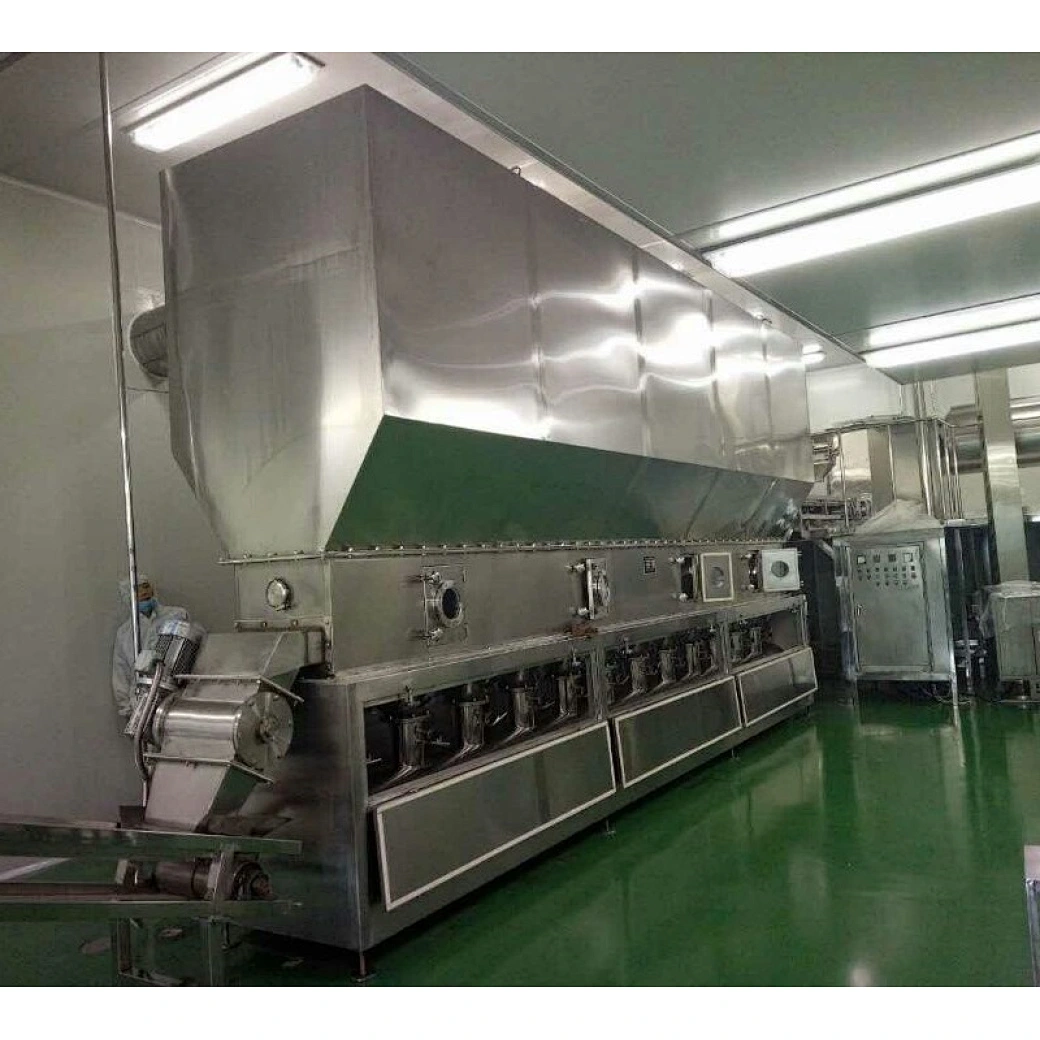
Technical Advantages & Manufacturer Comparison
Our commitment to innovation and quality sets the BeibuCleaner Sesame Peeling Machine apart. We focus on key technical advantages that translate directly into operational benefits for our clients.
Distinct Technical Advantages:
- High Peeling Rate & Low Breakage: Through extensive R&D, our unique peeling chamber design and optimized agitator speed minimize mechanical stress on the seeds, ensuring a peeling rate consistently above 98% while keeping the broken kernel rate below 2%. This significantly increases usable product yield compared to conventional machines.
- Advanced Water Recycling System: Our sesame hulling machine incorporates an optional integrated water treatment and recycling unit. This system filters and sanitizes the water used in the soaking and separation stages, allowing for significant water conservation (up to 70% reduction in fresh water intake) and reduced wastewater discharge, aligning with modern sustainability goals.
- Intelligent PLC Control: Equipped with a Siemens or Rockwell PLC and an intuitive HMI touchscreen, our machines offer precise control over parameters like soaking temperature, peeling time, agitator speed, and water flow. This allows for fine-tuning based on different sesame varieties, ensuring consistent quality and optimizing throughput. Automated fault detection and reporting minimize downtime.
- Robust & Sanitary Construction: All components in contact with sesame seeds and water are made from high-grade SS304 or SS316L stainless steel, ensuring compliance with international food safety standards (e.g., FDA, HACCP). The design features smooth surfaces, minimal dead corners, and quick-release clamps for easy cleaning and maintenance, preventing bacterial buildup.
- Modular Design for Scalability: Our sesame processing machine is built with a modular approach, allowing for easy expansion of capacity by adding additional peeling units or integrated components. This provides flexibility for businesses to grow without needing a complete system overhaul.
Manufacturer Comparison: BeibuCleaner vs. Competitors
While many manufacturers offer sesame peeling machines, key differentiators often emerge in terms of technology, material quality, and after-sales support. Below is a comparative overview:
| Feature | BeibuCleaner Sesame Peeling Machine | Typical Competitor A (Budget) | Typical Competitor B (Mid-Range) |
|---|---|---|---|
| Peeling Rate | ≥ 98% | 85-92% | 90-95% |
| Broken Rate | ≤ 2% | 5-8% | 3-5% |
| Material (Food Contact) | SS304 / SS316L (full compliance) | Partially SS201 / Painted Carbon Steel | Mainly SS304, some non-food grade parts |
| Control System | PLC with HMI (Siemens/Rockwell) | Basic push-button/relay logic | Basic PLC (Local brand) |
| Water Recycling Option | Yes, integrated | No | External add-on, limited integration |
| Hygiene & Cleaning | Sanitary design, easy clean-in-place (CIP) | Difficult to clean, prone to dead spots | Moderate, some areas challenging to access |
| After-Sales Support | Global network, remote diagnosis, 24/7 support | Limited, mostly regional | Moderate, delayed responses |
| Certifications | CE, ISO 9001, FDA/HACCP compliant design | Basic CE or none | Some regional certifications |
Customized Solutions for Every Need
Recognizing that every processing facility has unique requirements, we offer highly customized sesame processing machine solutions. Our engineering team works closely with clients to:
- Capacity Matching: Design systems from 500 kg/h for small-to-medium enterprises up to 5000 kg/h for large industrial operations.
- Layout Optimization: Tailor the machine footprint to fit existing factory layouts and integrate seamlessly with upstream cleaning and downstream drying/packaging lines.
- Automation Level: Provide options ranging from semi-automatic systems to fully automated, integrated peeling lines with minimal human intervention, including advanced sensors and remote monitoring capabilities.
- Specific Material Requirements: Offer different grades of stainless steel (e.g., SS316L for enhanced corrosion resistance in specific environments) or specialized components based on unique operational conditions or specific product output requirements.
- Energy Efficiency Enhancements: Implement custom solutions like heat recovery systems for drying or specialized pump designs to further reduce energy and water consumption.
Real-World Impact: Application Cases & Customer Experience
Our long-standing presence in the industry, spanning over 15 years, is a testament to the reliability and performance of our sesame peeling machines. We have successfully deployed hundreds of sesame processing machine lines across diverse markets, from the Middle East to North America, and Southeast Asia.
Success Stories:
Case Study 1: Large-Scale Tahini Producer, Middle East
Challenge: A prominent tahini manufacturer struggled with inconsistent peeling rates (avg. 85%) and high water consumption from their outdated sesame hulling machine, impacting product quality and operational costs.
Solution: We installed a customized BeibuCleaner 2000 kg/h sesame peeling machine line, integrating our advanced water recycling system and a fluidized bed dryer.
Results:
- Peeling Rate Increased: Consistently achieved over 98% peeling rate, leading to a 15% increase in usable hulled sesame output.
- Water Savings: Reduced fresh water intake by 65%, significantly cutting utility costs and environmental footprint.
- Energy Efficiency: Optimized drying process lowered energy consumption by 20%.
- Product Quality: The client reported a noticeable improvement in the whiteness and smoothness of their tahini, leading to enhanced market appeal.
Customer Feedback: "The BeibuCleaner sesame peeling machine transformed our operations. The consistent quality and massive savings on water and energy have made a direct impact on our profitability and brand reputation."
Case Study 2: Small-to-Medium Enterprise, Southeast Asia
Challenge: A growing bakery chain needed to produce their own hulled sesame for fresh pastries but had limited space and budget for a fully automatic line.
Solution: We provided a compact, semi-automatic 500 kg/h sesame seed peeling machine solution, designed for ease of operation and maintenance within a constrained factory footprint.
Results:
- Cost-Effective Production: Enabled in-house production of high-quality hulled sesame, reducing reliance on external suppliers and cutting ingredient costs by 30%.
- Improved Product Freshness: Freshly hulled sesame led to superior taste and aroma in their baked goods.
- Space Efficiency: The compact design fit perfectly into their existing facility, requiring minimal structural changes.
Customer Feedback: "We were impressed by BeibuCleaner's willingness to customize a solution for our smaller scale. The machine is incredibly reliable and has given us full control over our sesame quality, which our customers definitely notice."
Ensuring Trust and Reliability: Guarantees & Support
Quality Assurance & Certifications
At BeibuCleaner, our commitment to quality is unwavering. All our sesame peeling machines are manufactured under strict quality control protocols, adhering to international standards:
- ISO 9001:2015 Certified: Our manufacturing processes are certified to ISO 9001, guaranteeing consistent quality management from design to delivery.
- CE Mark: All relevant equipment carries the CE mark, indicating compliance with European Union health, safety, and environmental protection directives.
- FDA & HACCP Compliance: The design and material selection for all food-contact parts meet stringent FDA (U.S. Food and Drug Administration) requirements, and our systems are designed to facilitate HACCP (Hazard Analysis and Critical Control Points) compliance for food safety.
- Material Certificates: We provide material certificates for all stainless steel components (e.g., SS304, SS316L), ensuring traceability and authenticity.
Warranty & After-Sales Support
We stand by the quality and performance of our sesame seed peeling machines with comprehensive support:
- Standard 12-Month Warranty: All new sesame peeling machines come with a 12-month warranty covering manufacturing defects and component failures under normal operating conditions. Extended warranty options are available.
- Global Technical Support: Our team of expert engineers provides 24/7 online technical support, including remote diagnostics via the PLC system, troubleshooting, and operational guidance.
- On-site Installation & Training: For complex lines, we offer professional on-site installation, commissioning, and comprehensive training for your operational and maintenance staff, ensuring smooth startup and efficient long-term operation.
- Spare Parts Availability: We maintain a comprehensive inventory of genuine spare parts to minimize downtime. Critical wear parts are readily available for immediate dispatch.
- Preventive Maintenance Programs: We offer tailored preventive maintenance service agreements to maximize machine lifespan and optimize performance.
Delivery and Commissioning
Our typical delivery schedule for a standard sesame peeling machine ranges from 60 to 90 days from order confirmation, depending on customization levels and current production load. For integrated, fully automated lines, the lead time may extend to 120-150 days. We manage all logistics, including packaging (export-grade wooden crates) and shipping to your designated port. Upon arrival, our engineers can be dispatched for on-site installation and commissioning, typically taking 1-2 weeks, followed by operator training sessions.
Frequently Asked Questions (FAQ) about Sesame Peeling Machines
Q1: What are the primary differences between chemical and mechanical sesame peeling machines?
A1: Chemical peeling methods typically use caustic soda (sodium hydroxide) to dissolve the hull, offering a very high peeling rate. However, they require careful washing to remove chemical residues and generate significant wastewater, posing environmental challenges. Mechanical peeling, as employed by our sesame peeling machine, relies on hot water soaking and physical friction. It is more environmentally friendly, results in a natural product, and avoids chemical contamination, making it preferred for food-grade applications despite potentially slightly higher initial water consumption (though mitigated by our recycling systems).
Q2: What is the optimal water temperature for soaking sesame seeds before peeling?
A2: The optimal water temperature for soaking sesame seeds typically ranges from 70°C to 90°C (158°F to 194°F). This range effectively softens the hull without damaging the kernel's nutritional content or causing excessive leaching. Our sesame processing machine's soaking tank features precise temperature control for consistency.
Q3: How important is the material of construction for a sesame peeling machine?
A3: The material of construction is paramount, especially for food contact parts. Using food-grade stainless steel (SS304 or SS316L) is crucial to prevent contamination, ensure hygiene, resist corrosion from water and seed oils, and guarantee a long service life. Cheaper materials like SS201 or painted carbon steel can lead to rust, product contamination, and frequent breakdowns, making them unsuitable for food processing.
Q4: Can the sesame hulling machine process different varieties of sesame seeds?
A4: Yes, our sesame peeling machine is designed to process various types of sesame seeds, including white, black, and brown varieties. The PLC control system allows for adjustment of key parameters (soaking time, temperature, peeling intensity) to optimize the process for different seed characteristics, ensuring high peeling rates and low breakage regardless of the raw material.
Q5: What is the power requirement for a typical 1000 kg/h sesame peeling machine?
A5: For a 1000 kg/h sesame peeling machine line (including soaking, peeling, separating, and dewatering), the total installed power typically ranges from 15 kW to 25 kW. This varies based on specific model configurations and whether integrated drying and water recycling systems are included. Our machines are designed for energy efficiency to minimize operational costs.
Q6: How do you ensure the hulled sesame seeds are not damaged during the peeling process?
A6: Our sesame peeling machine utilizes a gentle friction-based peeling mechanism. Unlike abrasive methods that can chip or break seeds, our system uses optimized agitator designs and specific chamber geometry to ensure that the hulls are rubbed off by the interaction between the seeds themselves and the water, minimizing direct impact and preserving the integrity of the delicate sesame kernels. This results in a low broken rate, typically ≤ 2%.
Q7: What is the typical installation standard for these machines?
A7: Our sesame peeling machines are designed for straightforward installation. They typically require a level concrete floor with adequate load-bearing capacity. Standard industrial electrical connections (e.g., 3-phase, 380V/50Hz or 480V/60Hz) and access to potable water and drainage are essential. Detailed installation manuals and foundation drawings are provided. For larger or integrated lines, we recommend or provide on-site supervision for installation to ensure optimal setup and performance, adhering to local safety and environmental regulations.
Conclusion: The Future of Sesame Processing
The sesame peeling machine is more than just a piece of equipment; it's a critical investment for any business involved in sesame processing. As global demand for high-quality hulled sesame continues to rise, investing in advanced, efficient, and reliable machinery becomes paramount. Our BeibuCleaner sesame peeling machine represents the pinnacle of current technology, offering unparalleled peeling efficiency, minimal breakage, and sustainable operation through features like water recycling. With robust construction, intelligent control systems, and comprehensive after-sales support, we empower our clients to achieve superior product quality, reduce operational costs, and meet the stringent demands of the international food market.
The transition towards automation, enhanced hygiene standards, and environmental responsibility is a defining characteristic of the modern food processing industry. Our sesame processing machine embodies these trends, offering a future-proof solution for sustainable and profitable sesame processing. We invite you to explore how our tailored solutions can elevate your production capabilities and contribute to your success.
Further Reading and Resources:
- "The Global Sesame Seeds Market Size Report," Grand View Research. https://www.grandviewresearch.com/industry-analysis/sesame-seeds-market
- "Processing of Sesame Seeds for Food Applications," Journal of Food Science and Technology. https://link.springer.com/article/10.1007/s13197-013-0857-7 (Example citation - actual link may vary)
- "HACCP Principles & Application Guidelines," FDA. https://www.fda.gov/food/guidance-regulation-food-and-dietary-supplements/haccp
Apr. 25, 2024
Sesame Peeling Machine-Hebei Beibu Machinery Technology Co.,LTD
Nov. 11, 2024
Beibu Machinery participate in the 2024 China International Import Expo!
Sep. 26, 2024
Welcome Chad's Client's Visiting to Our Factory!-Hebei Beibu Machinery Technology Co.,LTD
Feb. 05, 2025
The new year for grains cleaning machine has begun
May. 27, 2024
sesame cleaning machine loading container
Mar. 28, 2024
Benin Soybean-Hebei Beibu Machinery Technology Co.,LTD
Beibu Machinery
If you are interested in our products, you can choose to leave your information here, and we will be in touch with you shortly.


